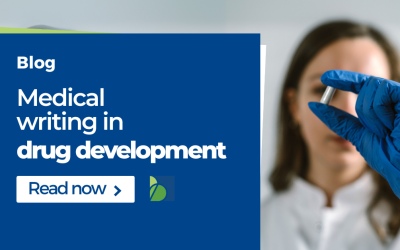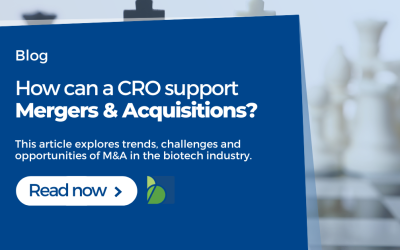It is easy to notice that Mergers and Acquisitions (M&A) have become a frequent occurrence in the Pharmaceutical industry, especially during the previous decades. Pharma industry is one of the leading industries in the number of M&A and the size of investments for such transitions. The value for M&A in the pharmaceutical sector was $221 billion in the first half of the year 2015 (1). In 2019, the worth of pharma companies M&A activities have reached $357 billion (2). These numbers show that spending on M&A tends to increase, and you might naturally ask yourself: what makes Pharma companies engage in this deal-making regularly? The rationale behind M&A is simple. Usually, the main drivers for M&A are the following:
- Increasing market share;
- Expanding product portfolio or creating new product pipelines;
- Reducing costs of Research and Development (R&D);
- Gaining access to Innovative Technologies;
- Concentrating on specific therapeutic areas of products;
- Access to different regional markets;
- Saving on taxes.
However, together with the benefits that companies gain through M&A, necessarily come additional challenges. M&A impose a significant administrative burden, especially on Regulatory Affairs. It is crucial to ensure all the required regulatory approvals before, during and after M&A are obtained on time. It is an essential duty in order to maintain regulatory compliance and to ensure that the continuous supply of pharmaceutical products may not be interrupted or affected as little as possible.
To ensure compliance, we should identify all legal changes and their impact on Regulatory Affairs before taking any actions. The most necessary changes arising from M&A that bring additional activities for Regulatory Affairs are the following:
- Change of company name or change of address of the company;
- Transfer of Marketing Authorisation Holder (MAH);
- Transfers of manufacturing sites;
- Changes in manufacturing processes;
- Changes in branding and logo;
- Withdrawal of existing Marketing Authorisations.
Change of company name or change of address of the company
Administrative changes such as company name change or change of address is a regulatory procedure. In Europe, it requires a submission of variation to Regulatory Agencies which is quite a simple process. In other non-EU markets, you will need to follow different requirements which differ case by case.
Transfer of Marketing Authorisation Holder (MAH)
MAH transfer is probably the most significant change impacting Regulatory Affairs. During the transfer of MAH, the company transfers the currently approved MAH to a new holder, which is a different legal entity. So, before the change, you should evaluate if it is only administrative change where only the name or/and address of existing MAH is changed or if the legal entity is changing.
The requirements and timelines for MAH transfer are different for products authorised via Centralised Procedures, Mutual Recognition/Decentralized Procedures and National Procedures. For products authorised via MRP/DCP or National procedure, the requirements and timelines for MAH transfer vary for each country. Therefore profound regulatory knowledge and understanding of National processes are required.
Besides, sometimes MAH transfer triggers additional changes, such as a change in Pharmacovigilance System Master File (PSMF), change of product name or local representative. Hence, other procedures may be required, as well. Moreover, it is important to differentiate which procedures are under the responsibility of current MAH and which should be taken by prospective MAH. Furthermore, it is crucial to understand which changes have an impact on package leaflets, labelling and packages and if we can implement the changes before submissions to Authorities or only after gaining approval.
Transfers of manufacturing sites and changes in manufacturing processes
Transfers of manufacturing sites and changes in manufacturing processes may require submission of specific variations and approvals from Regulatory Authorities. It is especially important to evaluate the timeframe for submissions and authorities approvals to ensure that there wouldn’t be any interruptions for the supply chain.
Change of branding and logo
Change of branding and logo may have an impact on Artworks of product packaging, labelling and the package leaflet. Even if this change usually does not require approval from Regulatory Authorities, RA personnel always have to check if they can use all the updated Artworks for packaging.
Withdrawal of existing Marketing Authorisations
After M&A, it often happens that companies acquire Marketing Authorisations of products pharmaceutically equivalent to those that they already have in their portfolio. For this reason, the first decision usually is to decide which MAs to keep and which to withdraw.
If a company decides not to place the product on the market, it is usually better to withdraw redundant MAs from the register. Even though the withdrawal of MA is quite a simple regulatory process, it can be time-consuming if the company decides to remove a large number of MAs at once. Moreover, finishing this process as soon as possible may save high costs for the company because, after completion, fees for variations and annual fees will no longer be needed.
The mentioned changes and requirements may confuse the employees of the companies who have not experienced M&A or are rarely facing such challenges. Even if Regulatory Affairs personnel is well experienced, the increased workload due to additional regulatory activities may be unmanageable. Therefore, timely submissions and follow-up of approvals for procedures are crucial to save costs and to maintain regulatory compliance.
If you want to get more information on M&A and regulatory procedures, don’t hesitate to contact us!
Igne Pleskute, MPharm
Regulatory Affairs Specialist
Biomapas
References:
- Kumar, B. R. (2019). Wealth Creation in the World’s Largest Mergers and Acquisitions. Springer International Publishing.
- How will deals done now deliver what the health ecosystem needs next?













